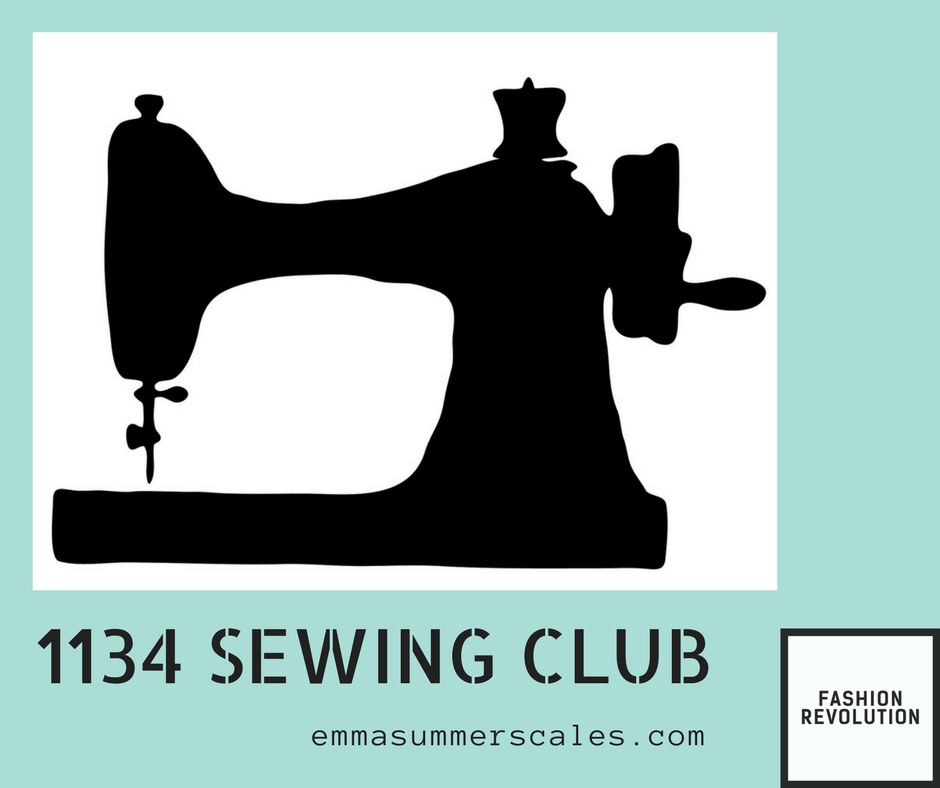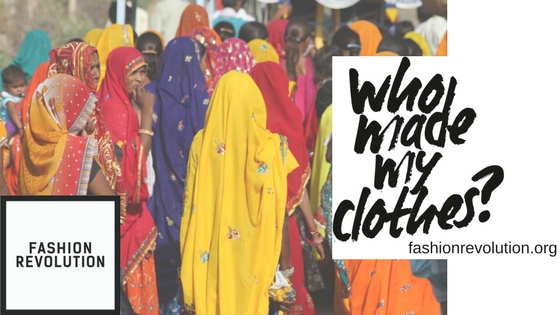
On 24 April 2013, 5 factories collapsed at Rana Plaza in Bangladesh killing 1,134 people and injuring 2,500, who were all making clothes to be sold on the Western market. This disaster inspired Orsola de Castro and Carry Somers to form the organisation Fashion Revolution. FR campaigns for a fairer, cleaner, more transparent and more beautiful fashion industry. I met both of these ladies last year and they inspired me to set up the 1134 SewingClub.
We pledged to sew 1 hour for every garment worker killed in the disaster.
And today, on Fashion Revolution Day, I’m pleased to say we did it, we sewed 1,377 hours.
Flora made and mended her childrens clothes and some beautiful gifts for friends, Pip and Meg patiently sewed quilts using scraps of fabric, Julia was inspired to start upcycling some favourite pieces of her Mum’s, Katy picked up the trends with her denim shirt and upcycled sparkly sweatshirt. Even Lesley (who has convinced herself she’s a non-sewer) managed a button or two and I’m still waiting to see the upcycled beanbag! And Nicky finally finished her bunting, taking a bit of time out to have a baby.
The serious point about all this is that through making something, we can gain an appreciation of the time and skill required. And once you have that appreciation fast, cheap fashion just doesn’t make sense. Try making a shirt; note how many hours it takes, buy sustainably and ethically produced cotton and calculate the cost of resources …. so just how can big brands sell them for less than £5.00???
The reality is that to keep prices this low for us, costs are being keep low somewhere else in the supply chain. Garment workers overseas are working in unsafe conditions without employment protection. Fashion Revolution have found that only 12% of brands were able to demonstrate action towards fair pay and 60% of garment workers are working without a contract in parts of China. That means no protection for illness or maternity, working hours or discrimination.
Some time ago, I heard about the Garment Worker Diaries. It is yearlong research project, led by Microfinance Opportunities in collaboration with Fashion Revolution. Researchers are gathering firsthand accounts of life as a garment worker from 540 women in Bangladesh, Cambodia and India. They are collecting data on the women’s earnings and outgoings, and how they manage their money as well as information about working conditions, health and welfare.
It’s humbling to read these accounts in the knowledge of how our fashion industry operates.
I think many people are unaware of the realities of fast fashion and the real power to change lies with the brands but awareness is growing. Fashion Revolution doesn’t ask us to turn away from fashion and walk around in sack cloth, they urge us to ask brands and policy makers about making the industry more transparent and fair. Last year 70,000 people asked brands #whomademyclothes by taking a selfie with the label showing and tagging the brand on social media. 1,000 brands in total responded, 372 of them mainstream like Fat Face, Boden and American Apparel.
So, if you feel inspired to join the Revolution, check out their website www.fashionrevolution.org. There’s a fanzine available which explores the money and power distribution across fashion supply chains … what does happen to your money when you buy clothes? And what can you do about it? … there are loads of ideas, below is a checklist with a few.



